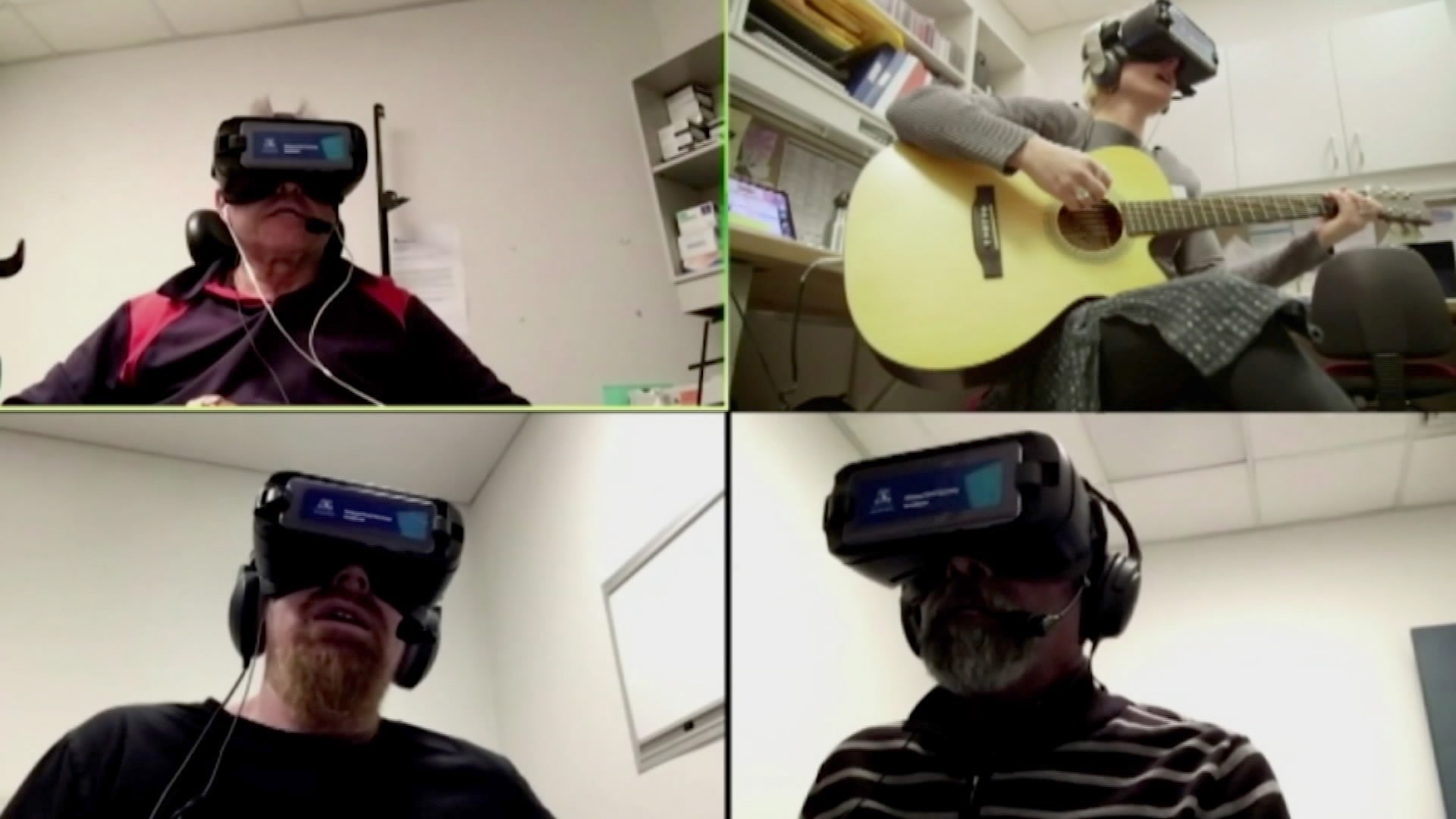
Tech & Sci
14:19, 19-Dec-2017
Cutting edge tech changing lives of people with disabilities
CGTN

This year's National Disability Awards (NDA) of Australia, which took place in Canberra earlier in December, featured a range of innovative new technologies designed to help the disabled.
And Australian scientists are now using virtual reality (VR) and 3D printing technology to make life for people with disabilities even easier.
VR helping disabled people to enjoy life
In Melbourne, VR is allowing quadriplegics to get together for singing sessions without leaving home, and one VR singing program was a finalist in the NDA.

Disabled people using VR to experience the wider world. /AP Photo
Disabled people using VR to experience the wider world. /AP Photo
A prototype at the University of Melbourne allows people with spinal injuries to have fun and company while doing vital breathing exercises.
The system was developed by Dr. Jeanette Tamplin, a music therapist from the university.
People with quadriplegia often cannot control their stomach and chest muscles, and over time their shallow breathing puts them at risk of dangerous respiratory problems.
Singing develops the muscles that help them breathe more easily.

A VR view of a campfire singing session. /AP Photo
A VR view of a campfire singing session. /AP Photo
"They can just put on the headphones and then be transported to a campfire with some other people sitting around and we can sing together," said Tamplin.
3D printing makes AFOs cheaper
As the winner in the innovation category, Sydney-based AbilityMate is using 3D printing technology to revolutionize custom-made orthotics used by children with disabilities.

AbilityMate discussing a recovery plan with a person with disabilities. /AP Photo
AbilityMate discussing a recovery plan with a person with disabilities. /AP Photo
For children with cerebral palsy, mobility braces are "magic shoes" that help them walk. But the process of being fitted with ankle-foot orthoses (AFOs) can be long and unpleasant.
Children have to endure a plaster-casting process, and there is such a backlog of orders for the devices that they often have to wear AFOs long after they have outgrown them.

Ankle-foot orthoses. /AP Photo
Ankle-foot orthoses. /AP Photo
Social entrepreneurs Melissa Fuller, Johan du Plessis and Melanie Tran realized that 3D printing technology could help.
Together they set up AbilityMate, which takes a quick and easy scan of a child's legs and creates what they call magic shoes with a 3D printer.

The "magic shoes" made by a 3D printer. / AP Photo
The "magic shoes" made by a 3D printer. / AP Photo
The company is currently focusing on supplying braces for Australian children with cerebral palsy, but it has global aspirations.
"At the moment, globally there are 100 million kids that need these things and out of that 100 million, only one out of 10 are currently getting these devices," said du Plessis.
AbilityMate says the AFOs can be created in 48 hours and are far cheaper to produce compared to previous production methods.
9021km
Source(s): AP

SITEMAP
Copyright © 2018 CGTN. Beijing ICP prepared NO.16065310-3
Copyright © 2018 CGTN. Beijing ICP prepared NO.16065310-3